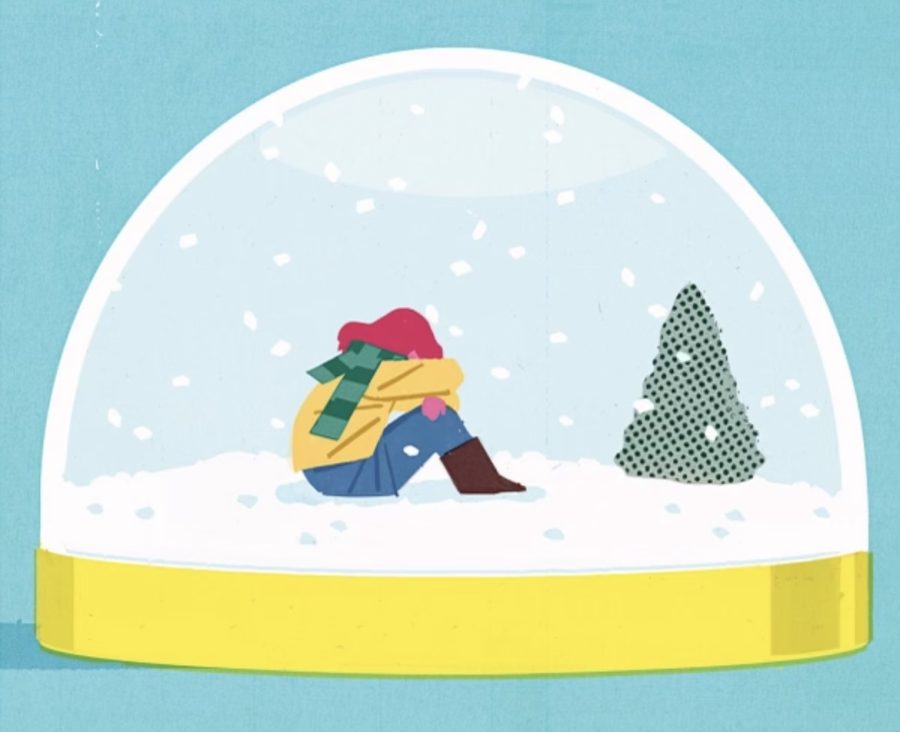Season Depression
Fall and winter are most commonly known to people all over the world for the holidays. Unfortunately, many teens don’t celebrate the way they want to; instead, they are under constant stress and emotional instability. Spring Valley students are in their prime teenage years and go through constant states of emotion every day, such as seasonal depression.
Seasonal affective disorder (SAD), most commonly known as seasonal depression is a mood disorder defined as a certain degree of depression that occurs in people more intensely during the fall and winter seasons. SAD is the brain’s response to seasonal changes in shorter daylight hours and colder weather. Symptoms of seasonal depression include fatigue, negative thoughts, hopelessness, social withdrawal, and changes in appetite.
“The whole concept of seasonal depression is something that reoccurs every season more particularly in the fall/winter time of year, especially [for me] when midterms approach,” senior Kierstyn Bailey said. “I lack motivation and I stress significantly about failure, but then I still don’t want to do anything.”
In the midst of the COVID-19 pandemic, which caused the shut down of in-person learning and distance learning coming into play, students’ mental stability has suffered. The smaller amount of social interaction led to more social anxiety and decreased social skills, which consumed Spring Valley students’ mental well-being.
“Because of the pandemic it has been harder for me to talk to new people,” sophomore Brianna Gamboa said. “I went from having friends to literally zero friends.”
According to Boston University, SAD affects an approximate of 10 million Americans and women have a four times more likely chance to be diagnosed compared to their male counterparts. Many more Americans and people around the world go undiagnosed everyday of their lives, especially teenagers.
“I haven’t been diagnosed with SAD by a doctor, but I also have symptoms based on what the guidance counselors here at Spring Valley describe,” Bailey said.
Spring Valley students all have individual lives and have different routines. Some of their activities may lead them to having seasonal depression or other mental illnesses. For example, the daily tasks of school, work, and other personal activities become draining, which is another reason why students seem to fall into “seasonal depression.”
“I think the sole [factor] of seasonal depression for me is school because a lot of teachers start to pack a lot of workload, especially towards semester exams,” Bailey said. “With semester exams, it’s worrisome because you have no idea how you’re going to do.”
Teenagers often feel uplifted when summer comes because there is more quality time for themselves and going out with friends, but as the cooler seasons approach this new routine changes.
“I work a lot during the summer, but I feel pretty happy when I work because I have freedom to do a lot of things,” Bailey said. “I personally get to work with kids one on one, and I actually get to enjoy it more often because I don’t have to worry about things like school or extracurricular activities interfering.”
Seasonal depression, like any other mental illness, causes social withdrawal and isolation. This especially influences the close bonds and relationships that students have with their loved ones.
“Seasonal depression impacts my relationship with my friends like it can affect my hospitality and irritability towards them,” Tataridis said. “I can be more rude and irritable not because I want to be, but because it’s a symptom of my seasonal depression.”
Even though mental illnesses such as depression, seasonal depression, anxiety, etc impact millions of diagnosed teenagers, there is a larger sum of youth not diagnosed and have no professional help. Without professional help, many do not know how to cope with their feelings effectively, which leads to unhealthy and dangerous coping mechanisms.
“I cope with retail therapy, listening to music, watching sad movies,” Gamboa said. “With retail therapy that includes buying clothes, drinks or anything. I need to buy stuff just to make me happy.”
“I overly confide in people like ranting towards people and being narcissistic on a day to day basis,” Bailey said. “Like it’s so normalized on social media, especially on Twitter to tell your whole business and I do that too much.”
Spring Valley high school offers many resources and outlets for students struggling with seasonal depression. Students can speak to counselors and teachers, or join clubs and sports as safe spaces. Even simply talking and meeting with friends can boost serotonin levels.
“I spend time with friends and family by talking to them. Facetime, texting and in-person experiences make it all better,” Tataridis said. “I also try to do self analysis like ‘What’s going wrong in my life?’ or ‘What can I control and what I can’t control in my life?.’ ”
If you know anyone struggling with depression or any other serious mental illnesses, please reach out to a counselor or teacher. To receive mental health services, you can contact the SAMHSA’s hotline (1-800-662-HELP (4357).










